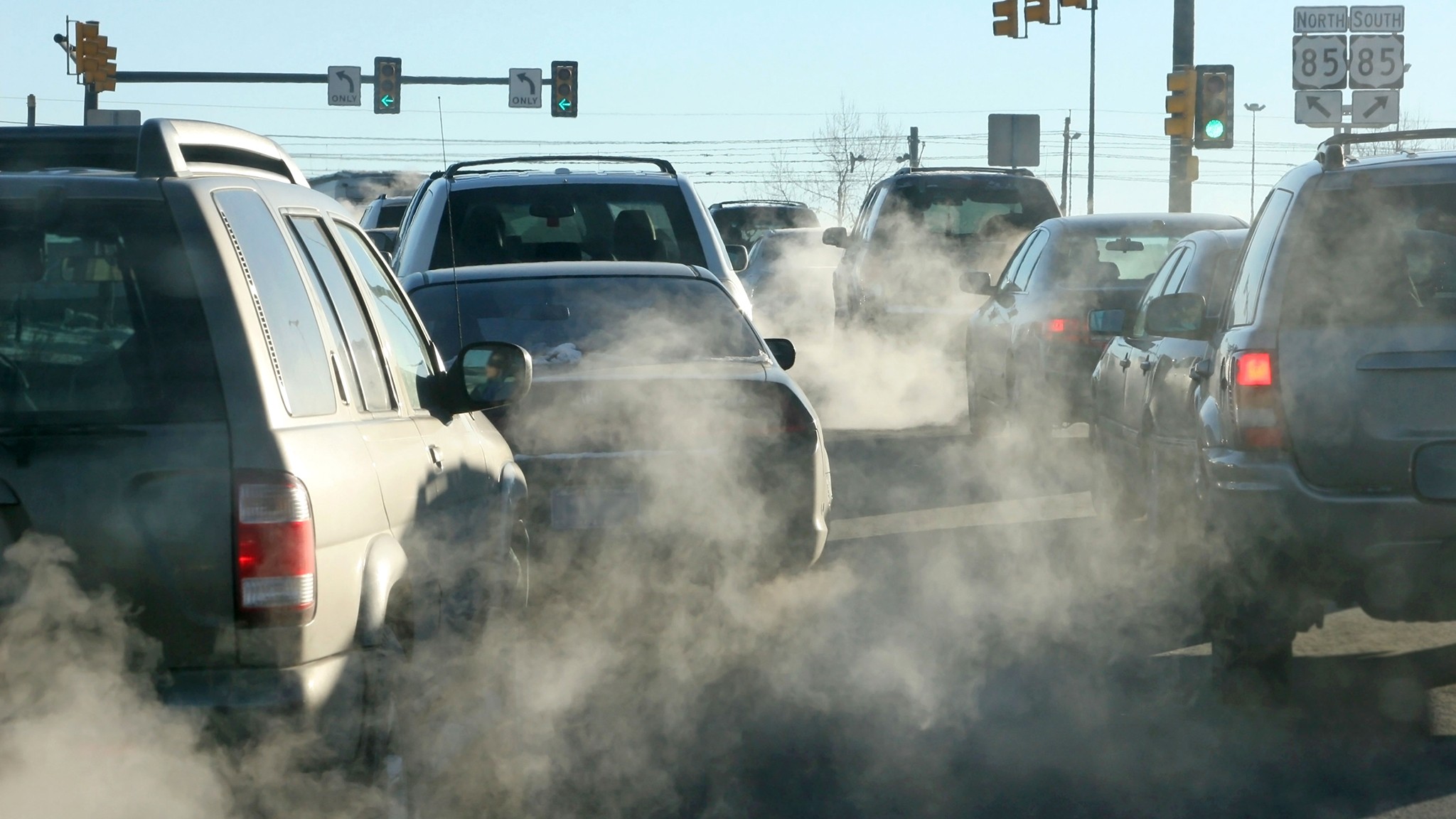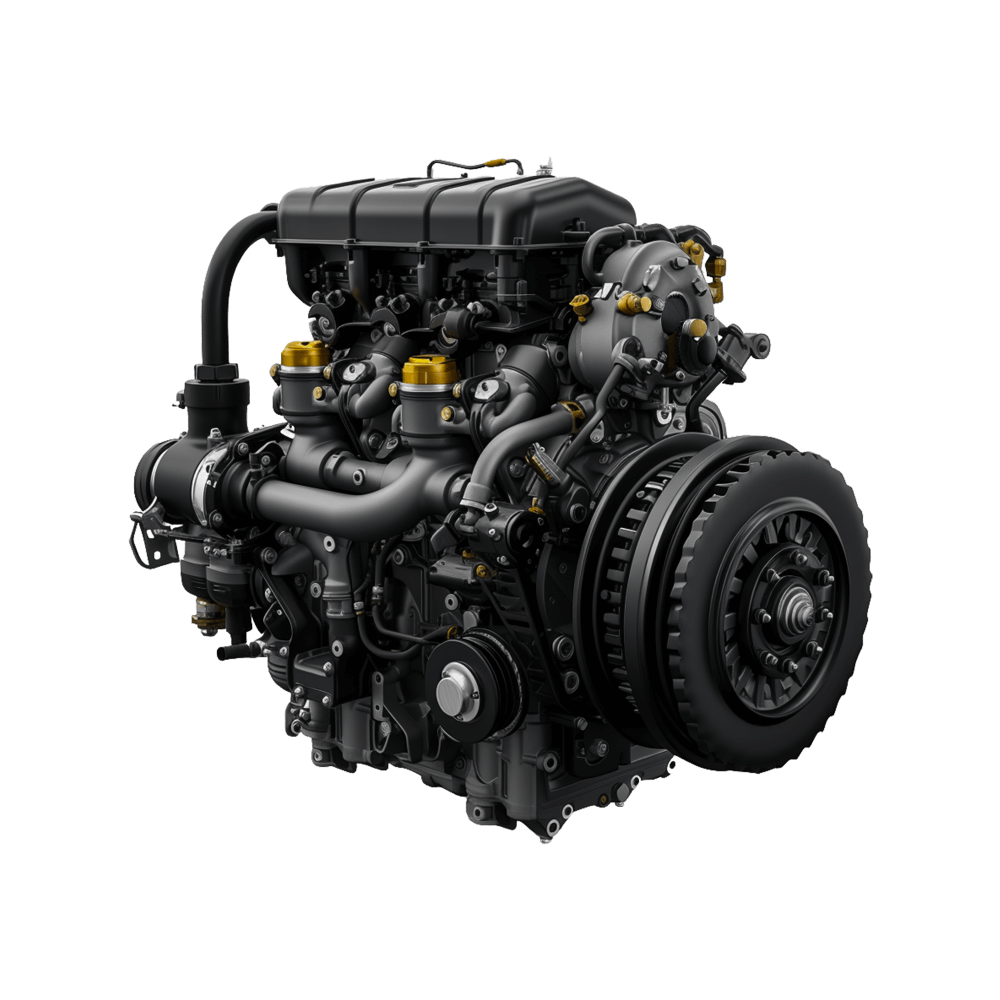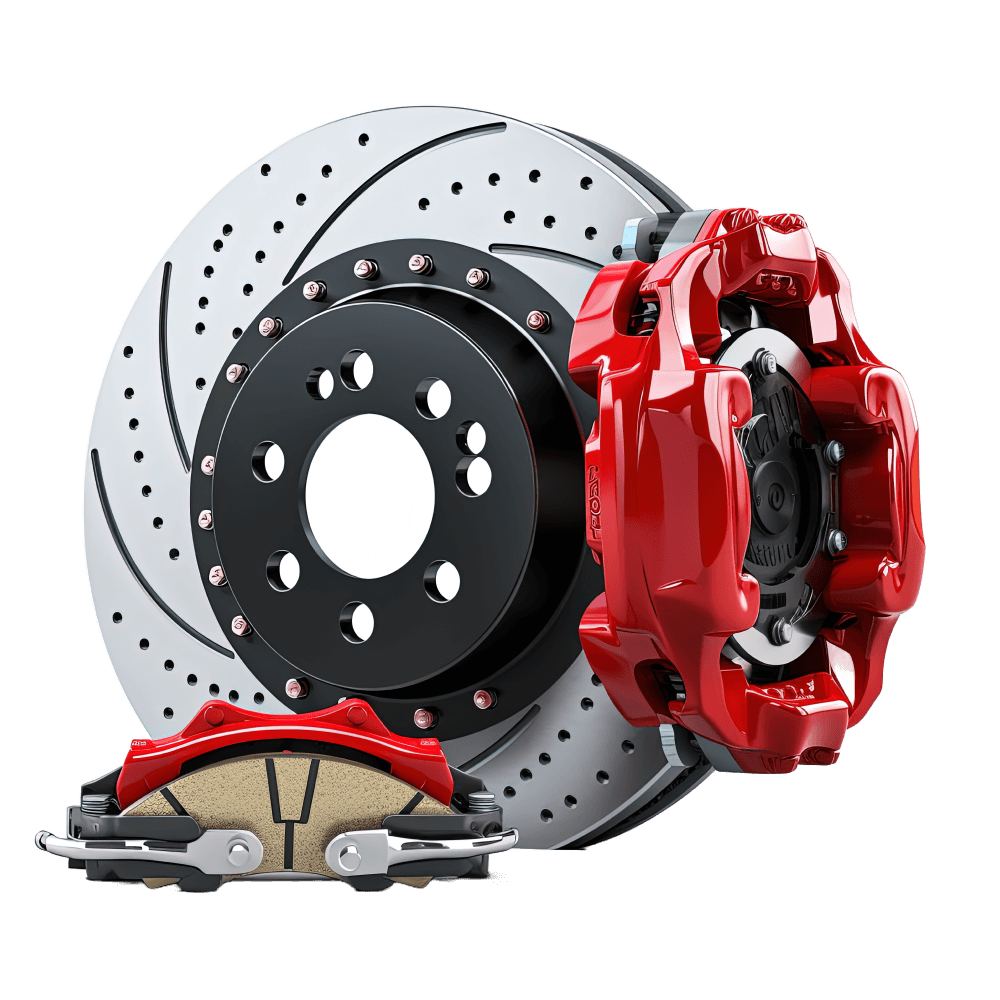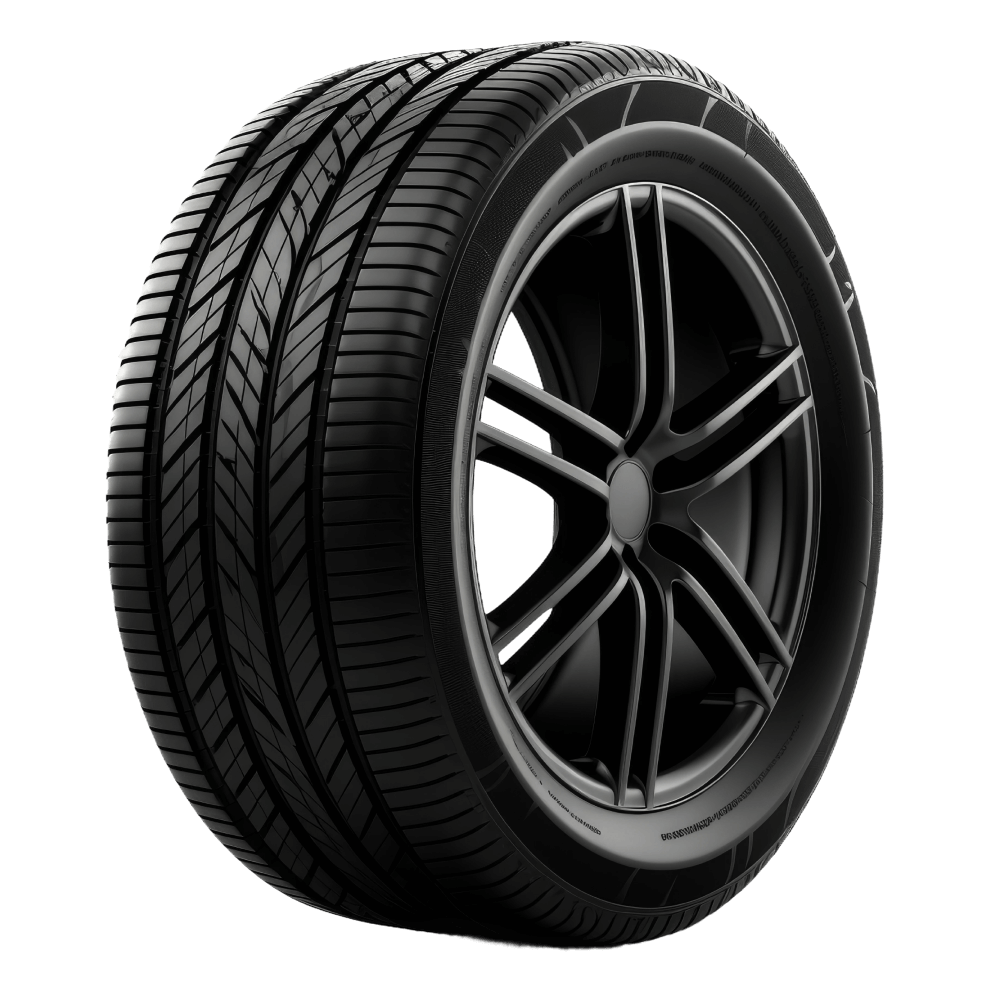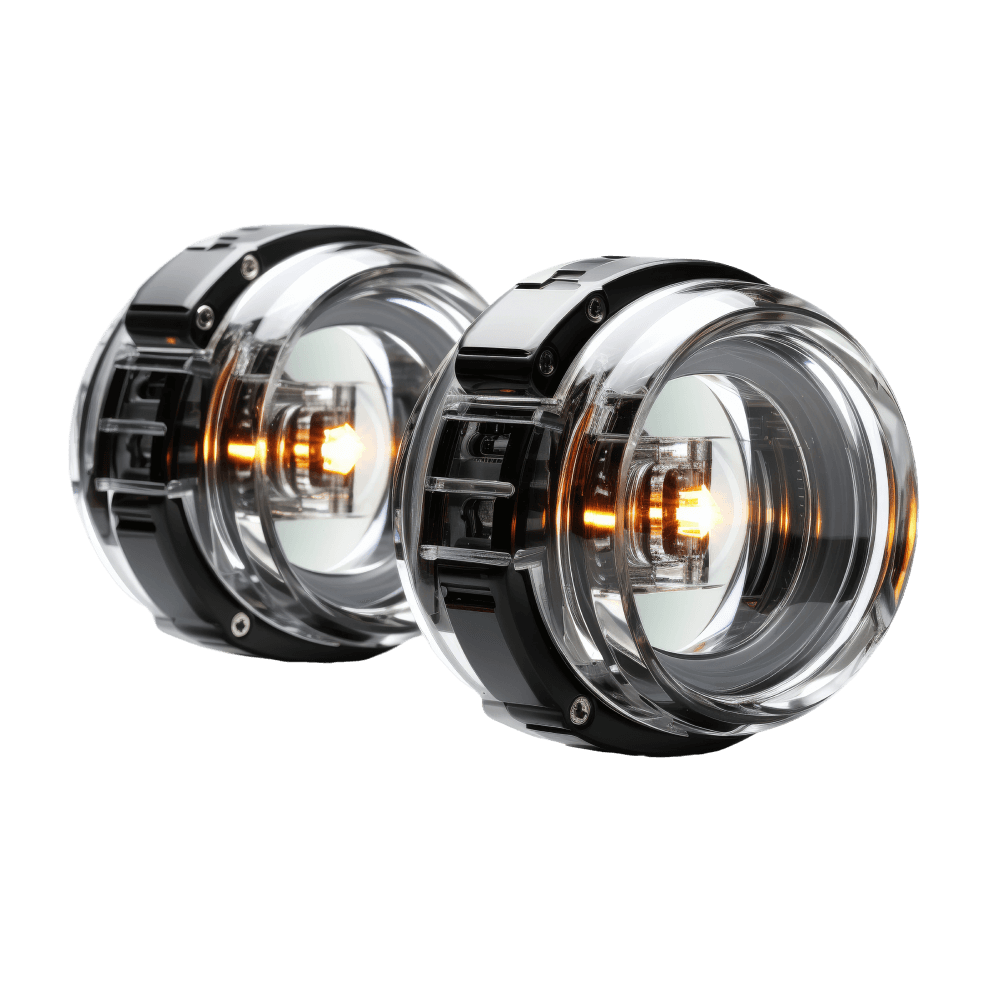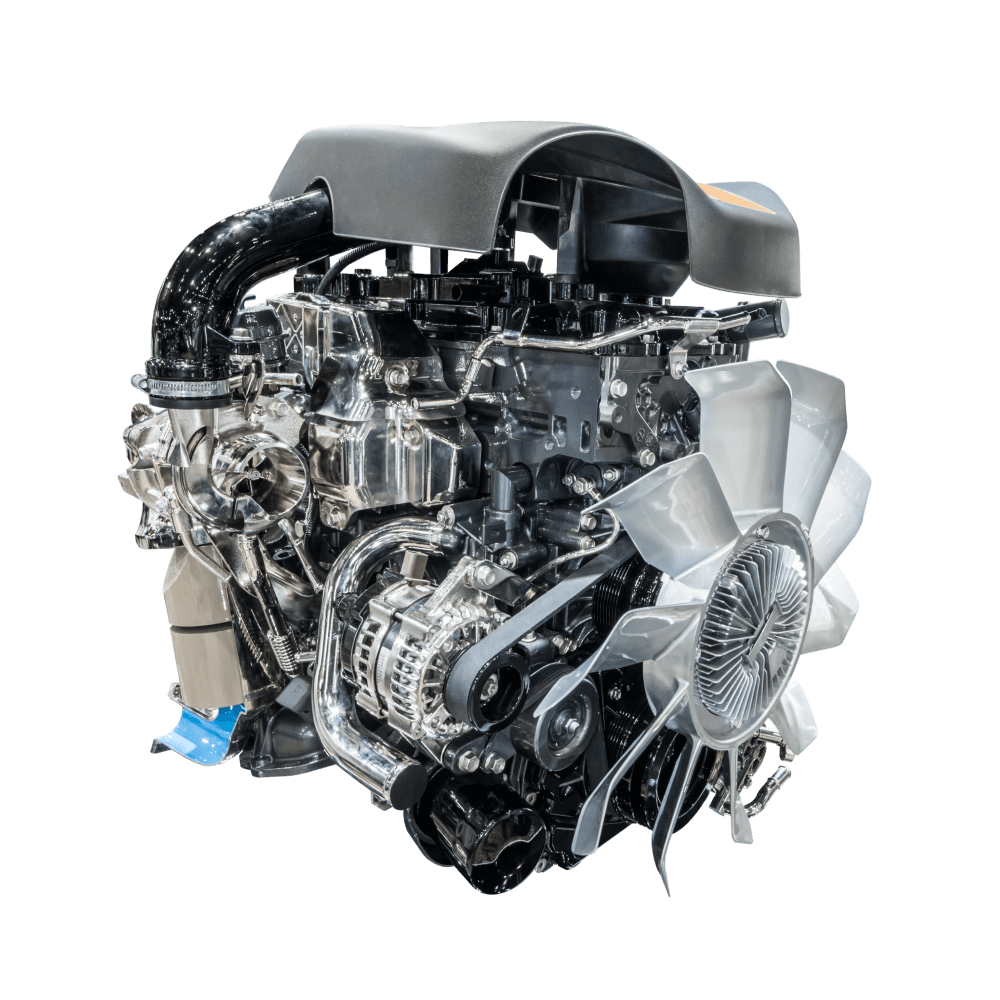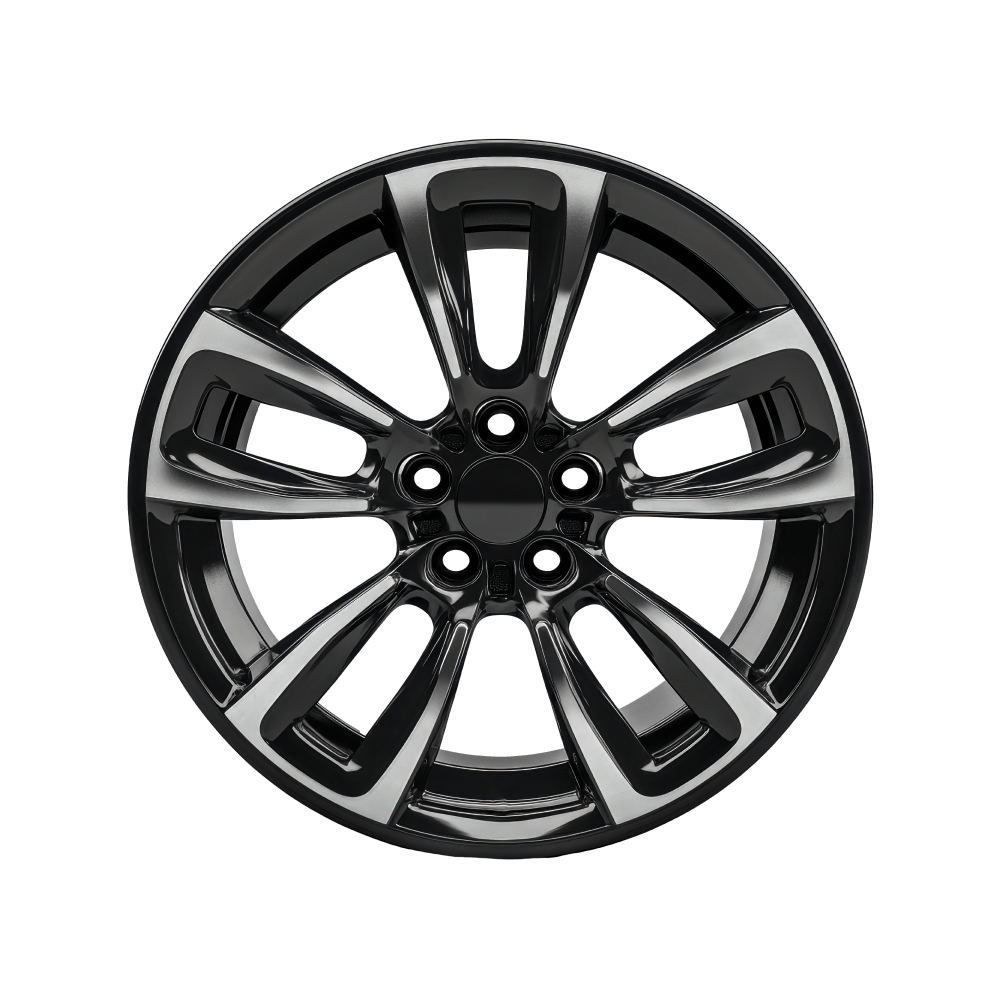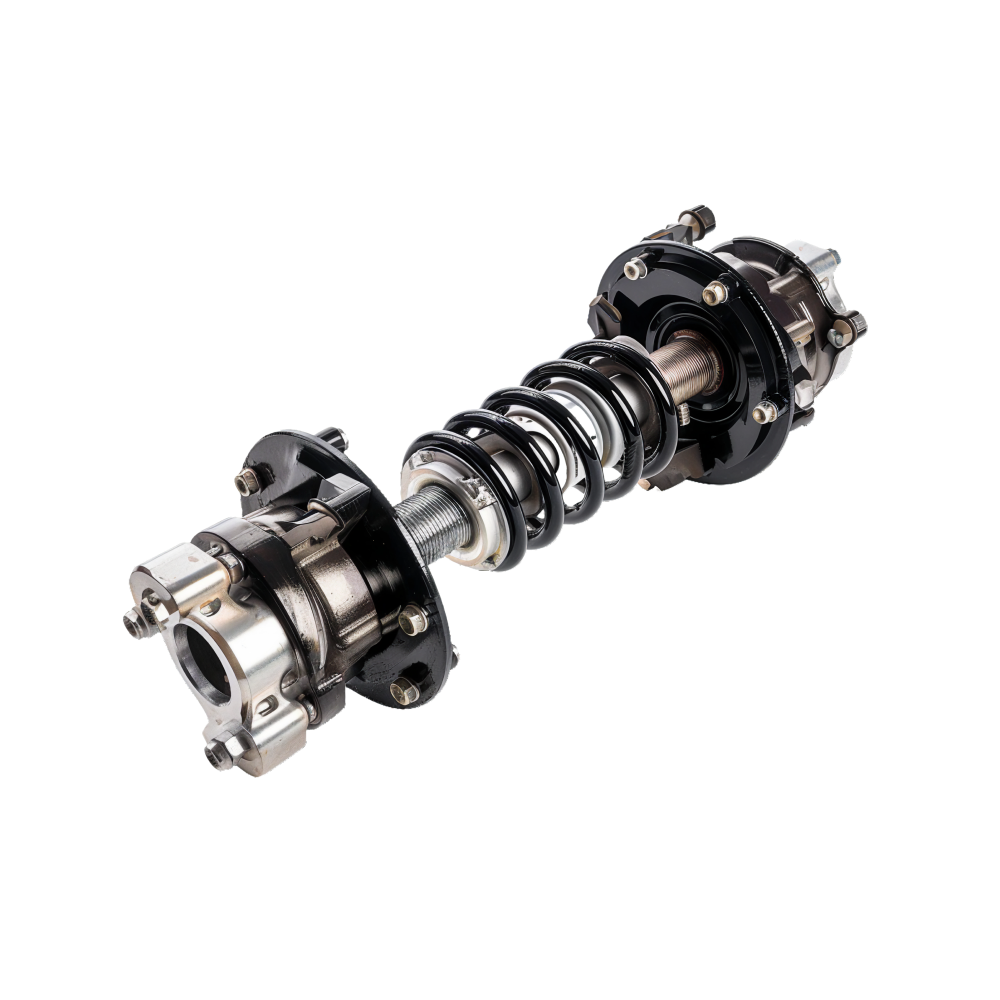News
Reviews
Buyer's Guide
Videos
What's My Car Worth?
Events
Ask MOTORTREND
The agency lays out weak and contradictory arguments to support a plan to defang itself.
See All 7 Photos
The Environmental Protection Agency has officially proposed ending its regulation of greenhouse gases for new cars, trucks, SUVs, and commercial vehicles. Specifically, it proposed rescinding the landmark 2009 Endangerment Finding, which identified greenhouse gases as contributors to climate change and, therefore, pollutants and a danger to human health and wellbeing under the Clean Air Act. The latter is the basis of all greenhouse gas regulation since.
0:00 / 0:00
If enacted, this proposal will, according to the EPA, “remove all existing regulations that require new motor vehicle and new motor vehicle engine manufacturers to measure, report, or comply with GHG (greenhouse gas) emission standards.” Automakers would still have to control other pollutants, but not carbon dioxide, methane, nitrous oxide, or hydrofluorocarbons. (The regulation also covers perfluorocarbons and sulfur hexafluoride, which are not found in vehicle exhaust.)
See All 7 Photos
Section 202(a) of the Clean Air Act states, “The Administrator [of the EPA] shall by regulation prescribe (and from time to time revise) in accordance with the provisions of this section, standards applicable to the emission of any air pollutant from any class or classes of new motor vehicles or new motor vehicle engines, which in his judgment cause, or contribute to, air pollution which may reasonably be anticipated to endanger public health or welfare.”
Until 2008, the EPA’s position was that it had no authority to regulate greenhouse gases. In 2008, the Supreme Court sided with Massachusetts and 18 other states in ruling the EPA does, in fact, have authority because the statute is written very broadly and carbon dioxide meets that broad definition. The Court told the EPA to reconsider its position, which it did, leading to the Endangerment Finding. In essence, the EPA administrator at the time found that science supported classifying carbon dioxide and the five other greenhouse gases noted above as pollutants under Section 202(a), and the agency was therefore obliged to regulate them.
On January 20, 2025, newly re-elected President Donald Trump signed an executive order titled “Unleashing American Energy” that directs relevant federal agencies to deregulate the energy sector, specifically regarding emissions. Upon Senate confirmation, EPA administrator Lee Zeldin initiated a review of the 2009 Endangerment Finding in response to the president’s executive order.
Having done so, the EPA has now published its plan to rescind the order. Public comments will be taken through September 15, and public hearings will take place on August 19, 20, and if necessary, 21. A final decision will be made some time after the public comment period closes.
See All 7 Photos
The EPA says regulating greenhouse gas emissions is making vehicles more expensive for both businesses and consumers. By making commercial vehicles more expensive, the agency says, regulating greenhouse gas emissions makes everything shipped by truck pricier. It also argues that repealing these regulations will “revitalize the American auto industry,” bring back auto industry jobs, and create other new jobs by making it more affordable to manufacture vehicles in the U.S.
The agency does not provide an explanation for how this will work. Greenhouse gas regulations are not a primary driver of offshoring automobile manufacturing. In theory, the R&D cost of developing cleaner powertrains would be reduced and automakers could pass those savings onto consumers in the form of lower prices, but they are not required to do so and there is no guarantee they would. The U.S. ceasing regulation of greenhouse gases is, in fact, unlikely to have a major impact on automaker R&D spending as no other major car market is lowering or eliminating standards, so automakers will still need to invest in technologies to meet those requirements in order to sell outside the U.S., which all automakers do.
See All 7 Photos
No. The 2009 Endangerment Finding only covers the greenhouse gases listed above. Other sections of the Clean Air Act require the EPA to regulate vehicle exhaust emissions including carbon monoxide, oxides of nitrogen (which are different than nitrous oxide), and particulate matter. As the EPA states in this proposal, “We are not proposing to reopen or substantively revise any emission standards for criteria pollutants or hazardous air pollutants or to reopen or substantively revise any regulatory provisions related to NHTSA’s CAFE standards.”
It should be noted, however, that although the EPA is not attempting to mess with its corporate average fuel economy (CAFE) standards, a provision in the One Big Beautiful Bill Act signed into law on July 4, 2025, reduces the penalties for violating CAFE regulations to $0.00. This means there is no penalty for automakers who fail to improve their vehicles’ fuel economy or even allow it to go down.
See All 7 Photos
There is no federal EV mandate in America, and there never was. While the EPA and administrator Zeldin, among other Trump Administration officials, continue to refer to one, no such mandate has ever existed. The CAFE fuel economy standards approved in the Biden Administration’s waning days would have forced automakers to improve fuel economy to lofty new heights, but it did not dictate how to achieve those goals. Automakers complained that doing so with pure combustion engines would be extremely difficult and suggested hybrid, plug-in hybrid, and pure electric powertrains would be necessary to meet them. The regulation as written, however, was neutral on which technologies should be used to achieve them.
Some conservative pundits and political analysts interpreted this as a de facto mandate, making the regulations so strict they couldn’t be met by traditional means. This discounts the ingenuity of automotive powertrain engineers, who have in the past found technical solutions for regulations that were also decried as impossible at the time. Regardless, their interpretation does not mean a legal mandate to use a specific technology—EVs—exists or ever existed.
While there was no federal mandate to overturn, California has its own mandate that requires all vehicles sold in the state in 2035 to be zero-emissions, which it defines as EVs, hydrogen fuel-cell vehicles, and confusingly, plug-in hybrid vehicles. That mandate is on hold after Congress voted to rescind California’s waiver under the Clean Air Act to set its own standards, which California has challenged in court.
See All 7 Photos
For a limited time, most likely. While the U.S. is one of the largest auto markets in the world, it’s only one market. Automakers will have to continue developing emissions controls, hybrids, plug-in hybrids, and EVs for the rest of the globe, where sales of large-displacement motors are likely to continue to fall. Eventually, it’s going to be too expensive to design and build bigger, dirtier, less efficient engines for just one market.
It’s also entirely possible the political situation in America will change in 2026 and or 2028, and with it the regulatory environment. If Democrats take control of one or both houses of Congress next year and/or the presidency in ’28, they’ll most likely reinstate all the rules the Trump Administration has repealed and could make them even stricter. Automakers are very aware of this possibility and are unlikely to risk being caught out and behind on R&D if the regulations snap back into place. Automakers plan five to 10 years in advance, and historically, emissions and fuel economy regulations have only gotten stricter (until now).
For these reasons, car companies are likely to continue developing emissions controls, hybrids, plug-in hybrids, and EVs, so there’s unlikely to be big savings for the consumer. Similarly, it’s unlikely they’ll invest heavily in all-new gasoline and diesel engines knowing the regulations could come back before those products pay for themselves.
Existing engines, though, could continue to be built as-is without incurring any new costs. It’s likely that automakers who struggled under current regulations will continue to offer V-8s and other pure combustion engines several years longer than they would have had the rules remained in place. Some, such as Stellantis, may put such engines into additional models to make a quick buck before the clock runs out. Eventually, though, those engines will still probably be phased out. It’s just a question of when. This action by the EPA is probably a temporary reprieve, not a permanent shift in the auto industry.
See All 7 Photos
The agency’s explanation for this move is a desire to lower costs for consumers. It contends that controlling greenhouse gas emissions adds significant cost to vehicles, which in turn adds significant cost to anything delivered by a more expensive vehicle. Relatedly, it contends the regulations are hurting American automakers, specifically by driving up their costs and stifling their ability to make greater profits. It makes no mention of the costs to Americans in cleaning up and rebuilding after climate-related natural disasters fueled by climate change, which significantly exceed the other costs mentioned above.
It also suggests that in making cars more expensive with emissions-control regulations, the current law keeps old cars on the road longer and makes climate change worse. It’s a valid point if you ignore all the other reasons cars are getting more expensive—and it undercuts the agency’s own arguments against the scientific consensus on climate change in the same document.
To support this conclusion and the proposed deregulation, the agency provides a laundry list of reasons that, in our analysis, are often contradictory, lacking context, and in some cases factually incorrect. It even goes so far as to undermine its own arguments by laying out ways in which it can still achieve its goals even if all its other arguments fail in any ensuing court cases, which suggests the authors are fully aware of how weak their position is.
The rationale relies most heavily on reinterpreting Supreme Court rulings of the past two decades and introducing doubt about the scientific basis for climate change. Neither is a strong case.
In the first matter, the EPA argues it doesn’t have jurisdiction to regulate greenhouse gases. The Supreme Court already ruled in Mass. vs. EPA that it does, and courts have struck down several legal challenges to the 2009 Endangerment Finding. The Supreme Court has turned down appeals to review those lower court decisions. To get around this, the agency argues Mass. vs. EPA did not require the agency to regulate greenhouse gases, which is true, but the ruling affirmed carbon dioxide meets the statutory definition of a pollutant and required the agency to go back and look at the science. Affirming that greenhouse gases like carbon dioxide are pollutants then obligated the agency to regulate them in motor vehicles under Section 202(a).
From there, the EPA goes on to argue more recent Supreme Court decisions narrowing the authority of executive agencies to interpret the law and requiring them instead to focus on the explicit wording as it applies here. None of the cases cited is related to the 2009 Endangerment Finding or Section 202(a). That aside, it still seems a difficult case to make. Section 202(a) is written very broadly and explicitly gives the EPA administrator authority to regulate any pollutants that “in [his or her] judgment cause, or contribute to, air pollution which may reasonably be anticipated to endanger public health or welfare.” It quite literally tells the EPA administrator to interpret the science and use his or her best judgement.
To get around this problem, the agency does something it explicitly accuses its predecessors of doing in 2009: “mental leaps” that “were admittedly novel.” It argues now that the Clean Air Act requires the effects of any pollution to be local or regional at most, not global, to be within its power to regulate. This is not supported by the text of the Act or by case law.
It goes on to argue the Clean Air Act requires it to show vehicles, specifically, are a contributor to climate change in order to regulate their greenhouse gas emissions. The Act does not say this, and science has long proven vehicle exhaust contributes to climate change.
Why make such weak arguments? It’s possible the agency and the Trump Administration are banking on the ideological shift in the Supreme Court since 2009. None of the justices who voted in favor of Mass. vs. EPA are on the court today, but three of the dissenters are.
The agency makes a similarly weak case against the science behind climate change. First, it introduces doubt about the scientific consensus around climate change by suggesting the scientific facts have changed since 2009 and should be reevaluated. While technically correct, the consensus around climate change has actually increased in terms of its impact, not decreased. A 2009 study published in the journal of the American Geophysical Union found 80 percent of climate scientists agreed climate change is real and caused by humans. Today, that number stands at 99.9 percent, according to a 2021 study published in the journal Environmental Research Letters. It analyzed 88,125 climate-related studies published globally since 2012 and found only 28 papers that were skeptical of human-caused climate change.
The agency goes on to blame foreign sources for contributing more greenhouse gases than the U.S., without mentioning the U.S. is the second largest polluter overall and the largest per capita (that is, individual Americans contribute more than individual citizens of other nations).
From there, the EPA begins to seriously undercut its own argument. It argues the effects of climate change aren’t as bad as scientists predicted, which both admits climate change is real and caused by humans. It’s also factually untrue. The actual degree of warming has followed almost exactly the trajectory first laid out by ExxonMobil scientists in 1977. Further, by admitting the effects of climate change are bad but arguing the semantics, the agency admits it causes harm to human health and welfare, therefore meeting the standard for regulation under Section 202(a).
The EPA then pivots to damage control, laying out multiple arguments as to why it should be allowed to stop regulating greenhouse gas emissions even if the science behind the concern is sound, and the 2009 Endangerment Finding is well supported. First, it attacks science again by claiming the administrator in 2009 interpreted it wrong. Given the science is stronger now than it was then, this should be a moot point.
It then accuses the 2009 administrator of breaking up the analysis into multiple parts and not considering them as a complete whole, which it says may have affected the conclusion. Given all the parts reached the same conclusion, this is again a moot point.
Finally, it argues it has authority to rescind the Endangerment Finding and stop regulating greenhouse gas emissions even if the science is correct because there’s no perfect technology that will eliminate all greenhouse gases in vehicle exhaust. Note that the Clean Air Act does not require such a standard. It further argues the agency’s belief that reducing greenhouse gas emissions in vehicle exhaust to zero would have no measurable impact on climate change, which is demonstrably false. In essence, it’s saying because there’s no perfect, easy solution, and because we at today’s agency don’t believe the science (which we admit might be correct), we shouldn’t even try.
Were you one of those kids who taught themselves to identify cars at night by their headlights and taillights? I was. I was also one of those kids with a huge box of Hot Wheels and impressive collection of home-made Lego hot rods. I asked my parents for a Power Wheels Porsche 911 for Christmas for years, though the best I got was a pedal-powered tractor. I drove the wheels off it. I used to tell my friends I’d own a “slug bug” one day. When I was 15, my dad told me he would get me a car on the condition that I had to maintain it. He came back with a rough-around-the-edges 1967 Volkswagen Beetle he’d picked up for something like $600. I drove the wheels off that thing, too, even though it was only slightly faster than the tractor. When I got tired of chasing electrical gremlins (none of which were related to my bitchin’ self-installed stereo, thank you very much), I thought I’d move on to something more sensible. I bought a 1986 Pontiac Fiero GT and got my first speeding ticket in that car during the test drive. Not my first-ever ticket, mind you. That came behind the wheel of a Geo Metro hatchback I delivered pizza in during high school. I never planned to have this job. I was actually an aerospace engineering major in college, but calculus and I had a bad breakup. Considering how much better my English grades were than my calculus grades, I decided to stick to my strengths and write instead. When I made the switch, people kept asking me what I wanted to do with my life. I told them I’d like to write for a car magazine someday, not expecting it to actually happen. I figured I’d be in newspapers, maybe a magazine if I was lucky. Then this happened, which was slightly awkward because I grew up reading Car & Driver, but convenient since I don’t live in Michigan. Now I just try to make it through the day without adding any more names to the list of people who want to kill me and take my job.
Read More
Join Newsletter
Subscribe to our newsletters to get the latest in car news and have editor curated stories sent directly to your inbox.
Explore Offerings
A Part of Hearst Digital Media
©2025 Hearst Autos, Inc. All Rights Reserved.
Report Issue
Cookie Choices
Follow us
Load More

